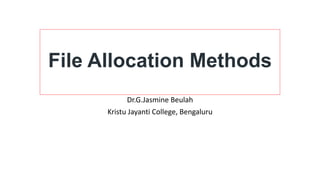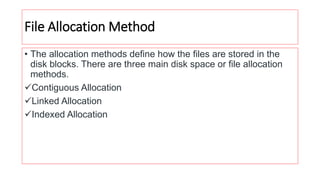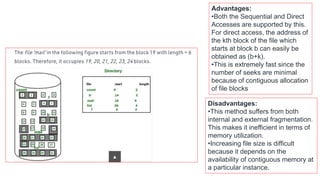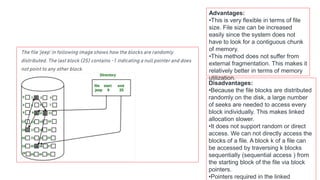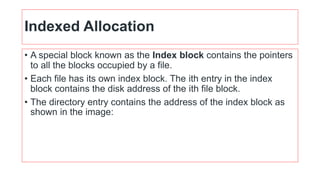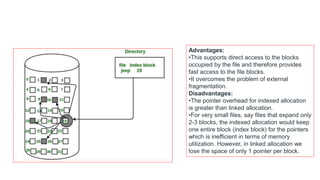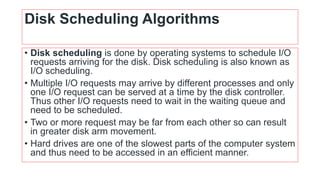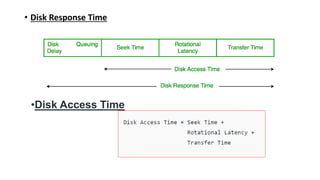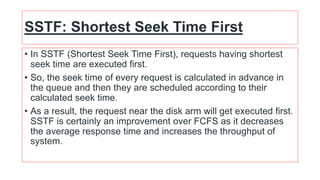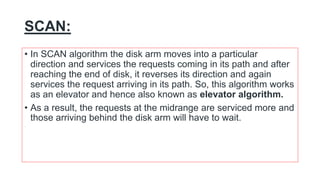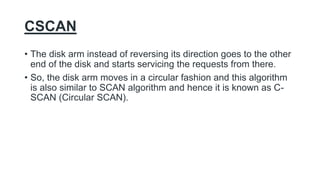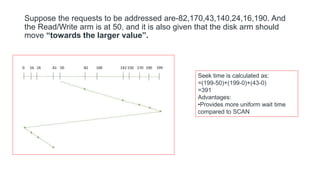The document discusses various file allocation methods and disk scheduling algorithms. There are three main file allocation methods - contiguous allocation, linked allocation, and indexed allocation. Contiguous allocation suffers from fragmentation but allows fast sequential access. Linked allocation does not have external fragmentation but is slower. Indexed allocation supports direct access but has higher overhead. For disk scheduling, algorithms like FCFS, SSTF, SCAN, CSCAN, and LOOK are described. SSTF provides lowest seek time while SCAN and CSCAN have higher throughput but longer wait times.
